Shipwrecks–there’s something infinitely fascinating about them. Whether it be a wreck as famous as the Titanic or the lesser-known shipwrecks of the Great Lakes, every single one of them is interesting. These shipwrecks have spawned books, movies, and even songs like Gordon Lightfoot’s “The Wreck of the Edmund Fitzgerald”.
Maritime history is full to the brim of shipwreck stories, and their individual tales of heroism, tragedy, and everything in between.
For those interested in the history of shipwrecks, there is plenty of material to keep them busy, because it’s estimated that there are at least 3 million shipwrecks scattered across the ocean floors.
Here we won’t be able to go over those 3 million wrecks, but we are going to take a look at the most famous shipwrecks in history. When it comes to man versus the power of the ocean (or lake!) we don’t always win, and these shipwrecks offer a stark reminder of that truth.
The USS Arizona
- Name: USS Arizona (BB-39)
- Type of Ship: Pennsylvania-class battleship
- Length: 608 ft (185.3 m)
- Date of Wreck: December 7, 1942
- Reason for Wreck: Sunk during the attack on Pearl Harbor
The USS Arizona was the second Pennsylvania-class battleship ever built, and it would be the last. Like other ships on that fateful day, the USS Arizona was sunk when Japan launched its attack on Pearl Harbor off the coast of Hawaii.
Just past 8 a.m. on December 7, ten Nakajima B5N2 Japanese torpedo bombers attacked the Arizona. The Arizona was hit by a number of bombs, causing the battleship to sink beneath the waves, killing 1,177 crew members that were aboard.
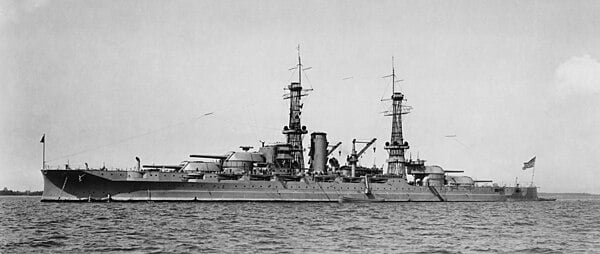
While the four hits landed by the Japanese planes were the catalyst for the sinking, what truly destroyed the battleship was the magazine explosion that detonated in response to the bombs.
The results of the magazine explosion were devastating, sealing the fate of the USS Arizona.
In 1989, the USS Arizona was declared a National Historic Landmark. It remains where it sank, and is visited by over 2 million people a year.
RMS Titanic
- Name: RMS Titanic
- Type of Ship: Olympic-class ocean liner
- Length: 882 ft 9 in (269.1 m)
- Date of Wreck: April 15, 1912
- Reason for Wreck: Struck an iceberg, broke in half, and sank.
No list of famous shipwrecks is complete without the RMS Titanic. Once called the unsinkable ship, the RMS Titanic sank on its maiden voyage, cementing itself in history as the most memorable shipwreck of all time.
When the ship went down, it took 1,514 lives with it. The Titanic’s tragic sinking inspired media such as James Cameron’s 1997 hit movie Titanic.
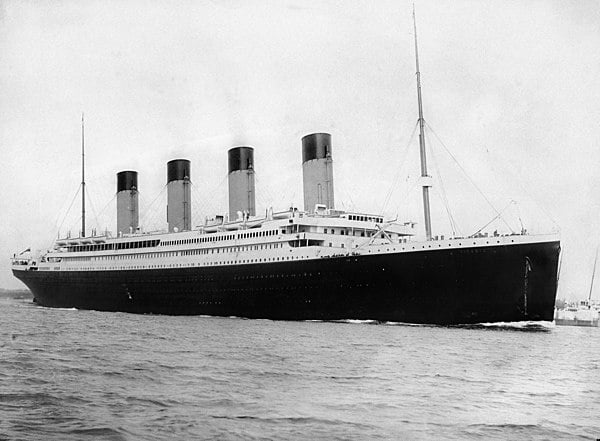
In 1985 an expedition was finally able to find the remains of the Titanic, and this allowed the discovery that the ship had been split in two before sinking. For the first time since its sinking, the world was able to look upon the Titanic once more, reigniting interest in the ship that is still going strong today.
Subsequent expeditions to the Titanic have been fairly common, but the depth that the ship is at makes visiting it incredibly dangerous.
This was made tragically apparent when in June 2023 a submarine, Titan, created by the company OceanGate was lost while taking civilians down to see the Titanic. The small submersible imploded, and all 5 lives on board were lost.
RMS Lusitania
- Name: RMS Lusitania
- Type of Ship: Ocean liner
- Length: 787 ft (239.9 m)
- Date of Wreck: May 7, 1915
- Reason for Wreck: Hit by a torpedo fired from a German U-boat
Unlike the aforementioned ocean liner, the Titanic, the RMS Lusitania lived a long and productive life before her sinking. Lusitania completed 202 trans-Atlantic crossings during her time in service.
During World War I, many ships were converted for battle, and while Lusitania could be converted to an armed merchant cruiser if needed, she was operating as a commercial passenger ship (although she was carrying some munitions, they made up a small portion of her total cargo).
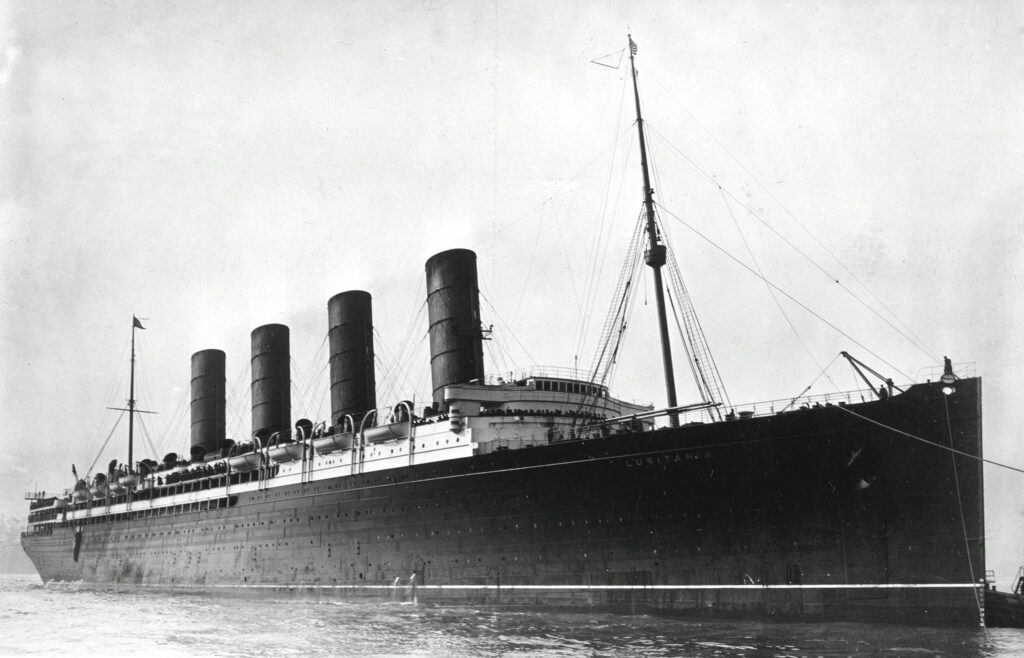
It was during one of these commercial cruises when a torpedo from German U-boat U-20 struck her on the starboard bow.
The loss of life was catastrophic–out of 1,962 passengers and crew, 1,191 perished.
It didn’t take long to locate the wreckage of the Lusitania–it was found on October 6, 1935, only 11 miles from the lighthouse at Kinsale, Ireland. Due to the nature of its sinking, it was in poor shape, but four propellers were recovered, with three being put on display.
The sinking of the Lusitania caused anger and shock to ripple across the world, and along with Pearl Harbor, her sinking greatly contributed to the US joining World War II.
HMS Erebus and Terror
- Name: HMS Erebus and HMS Terror
- Type of Ship: Hecla-class bomb vessel and Vesuvius-class bomb vessel
- Length: 105 ft (32 m) and 102 ft (31.09 m)
- Date of Wreck: Roughly assumed to have been abandoned in April of 1848
- Reason for Wreck: Caught in ice flow, damaged, and abandoned.
Once one of the greatest mysteries in maritime history, some light has been shed on the sinking of the Erebus and Terror in recent years, but there are still countless unanswered questions.
Unlike most of the ships on our list, it’s difficult to pinpoint when the Erebus and Terror sank, but what we do know is that the entire crew of both ships were lost.
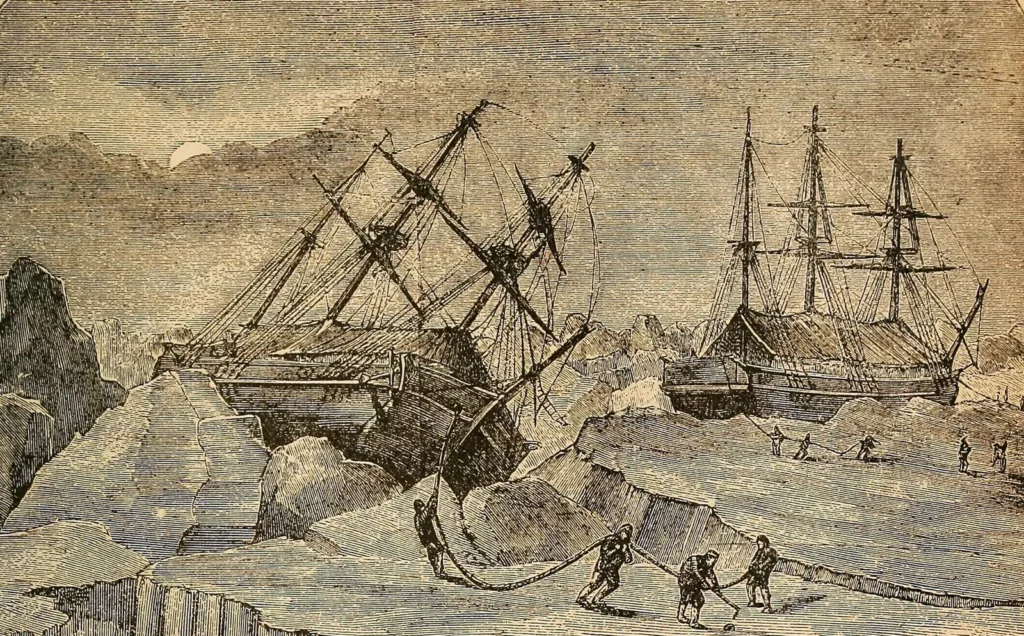
The Erebus and Terror set off from Europe to find the Northwest Passage in 1845. The expedition was named after the captain of the Erebus, Captain Sir John Franklin. Within 3 years, the ships were abandoned, trapped in the ice, and hopelessly stuck.
What happened to the crew from there is still unknown, but some hypotheses are death by exposure after abandoning the ships or lead poisoning from faulty welding on the cans of food.
Many missions were sent out over the years to discover the fate of the Franklin Expedition, but it wasn’t until September 2, 2014, that the Erebus was discovered. Almost exactly two years later on September 3, 2016, the Terror was also found.
Both wrecks were in amazing condition considering how old they were. Remarkably, the ship’s bell was recovered from the Erebus and can be viewed at Nattilik Heritage Centre, in Gjoa Haven, King William Island, Nunavut, Canada.
SS Sultana
- Name: Sultana
- Type of Ship: Steamboat
- Length: 260 feet
- Date of Wreck: April 27, 1865
- Reason for Wreck: Boiler explosion caused by faulty repairs
It might surprise you to learn that the deadliest maritime disaster in United States history isn’t an ocean liner or even a battleship. The holder of this unfortunate record is actually a steamboat, called the SS Sultana, and she went down in the Mississippi River.
Sultana was a passenger steamboat, and her capacity was listed at 376 passengers. On the morning of April 15, 1865, steamboat Captain James Mason was offered a deal.
A boat was needed to take released Union prisoners of war from the south to the northern states now that they were free. Mason would be paid by the head for the prisoners he could take, and he readily agreed.
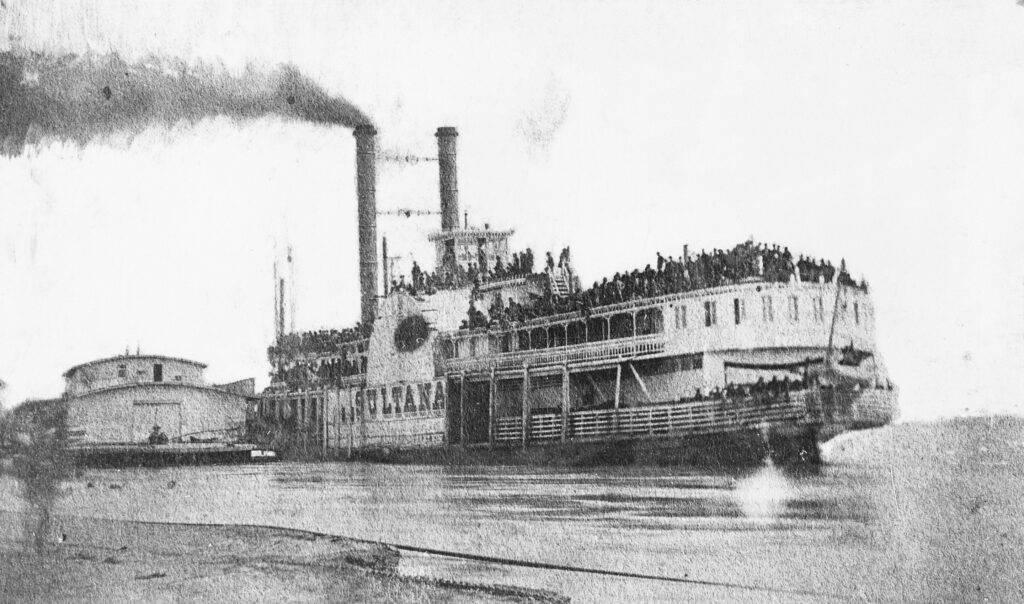
On April 24, she was loaded with prisoners as well as normal passengers and crew members. Despite the Sultana only having a capacity of 376, she was severely overloaded, and by the time she left port she was carrying 2,128 people.
The overloaded ship, combined with a faulty boiler that had only been haphazardly repaired, was a recipe for disaster.
On the night of April 27, the boilers on board violently exploded without warning. The hot steam and the force of the explosion killed many people in an instant. The steamboat caught fire once the furnace boxes were exposed, and even more lives were lost when the damaged smokestacks began to collapse on passengers.
Those who survived the initial blast had to compete with the freezing water of the Mississippi. Luckily, some were saved by other nearby ships, but many weren’t so fortunate.
The wreck of the Sultana was not found at the bottom of the river when it was discovered. Instead, the burnt wreckage was found in 1982 beneath a Soybean field in Arkansas.
This strange placement occurred because of the Mississippi River’s ever-changing course, which left the remains of the tragic steamboat on dry land.
MV Doña Paz
- Name: MV Doña Paz (formerly the Himeyuri Maru)
- Type of Ship: Passenger ferry
- Length: 305 ft (93.1 m)
- Date of Wreck: December 20, 1987
- Reason for Wreck: Collision with the MT Vector
When the Doña Paz was first built, she went by a much different name, the Himeyuri Maru. Built in Japan, Doña Paz was launched in 1963, but by 1975 she was purchased by a shipping line in the Philippines known as Sulpicio Lines.
The capacity of the Doña Paz was 1,518 passengers, but the night she sank, she was severely overcrowded and was carrying over 4,000 passengers.
Thousands of these passengers were not listed on the manifest, making rescue and recovery even more difficult.
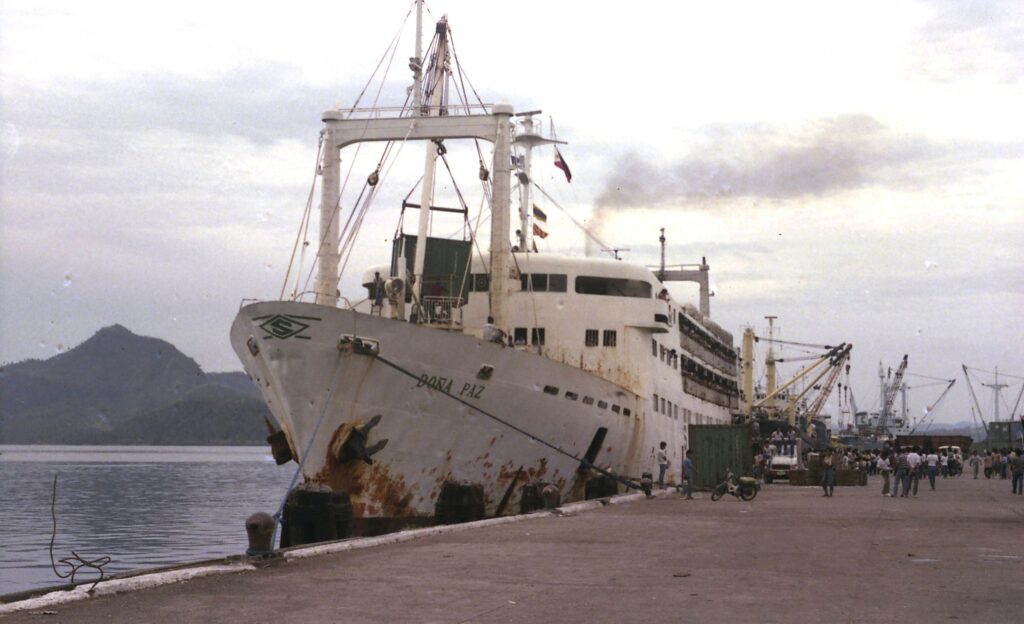
Doña Paz was on the way to Manila when, on December 20, 1987, she collided with an oil tanker called the MT Vector.
The collision itself was terrible and violent, but it also caused oil to leak from the Vector and both ships to catch fire. One survivor recounts that there was so much oil that even the sea was burning.
Along with being overcrowded, the Doña Paz was wholly unfit for any sort of passenger travel, but this wasn’t known until it was too late.
Sources suggest that the Doña Paz didn’t have a radio, making it impossible for the Vector to warn them of the oncoming collision. This also made it impossible for Doña Paz to call for help once she was struck. Even worse, the crew made no efforts to organize or provide any assistance to the passengers in the panic.
But the worst piece of negligence discovered was that the life jacket lockers were locked up.
Doña Paz sank in two hours, and her few survivors were forced into the freezing, shark-filled water in the dark. They were surrounded by the dead and the drowning with no life jackets and no sense of where they were. Two hours after that, the Vector sank as well.
The sinking of the Doña Paz is the deadliest peacetime disaster in maritime history. While the true number of passengers is unknown, when combined with the death toll from the Vector, 4,385 people died that night, and only 26 would survive.
The wrecks of both the Doña Paz and the Vector were found at the same time, in April 2019. Video footage of the discovery was released, and both ships were found to be in good condition.
SS Edmund Fitzgerald
- Name: SS Edmund Fitzgerald
- Type of Ship: Lake freighter
- Length: 729 ft (222 m)
- Date of Wreck: November 10, 1975
- Reason for Wreck: Lost in a storm on Lake Superior
The Edmund Fitzgerald might rival the Titanic for fame, but only on the coast of Lake Superior and in the minds of Gordon Lightfoot fans.
When she was launched, the Edmund Fitzgerald was the largest ship on the Great Lakes, and while she doesn’t hold that distinction anymore, she does remain the largest to ever sink on the Great Lakes.
The sinking of the Edmund Fitzgerald is somewhat of a mystery–not for the reason, which was unquestionably the storm over Lake Superior that night–but in the details. The last time the ship was radioed, her captain answered a simple “We’re holding our own.”
And the Edmund Fitzgerald was never heard from again.
We don’t have an exact time that the Edmund Fitzgerald went down, but we do know that it was on November 10, 1975. At the time, the storm that the ship was mired in had sustained winds over 50 knots, and waves as high as 25 were recorded.
By the time she sank, Edmund Fitzgerald had reported to the ship that was following behind, the Arthur M. Anderson, that she was taking on water, and that the ship had developed a list.
Not long after that report, Captain Earnest M. McSorley of the Edmund Fitzgerald radioed the Arthur M. Anderson to let her know that the radar on the Fitzgerald had failed and asked the Anderson to keep track of the ailing ship.
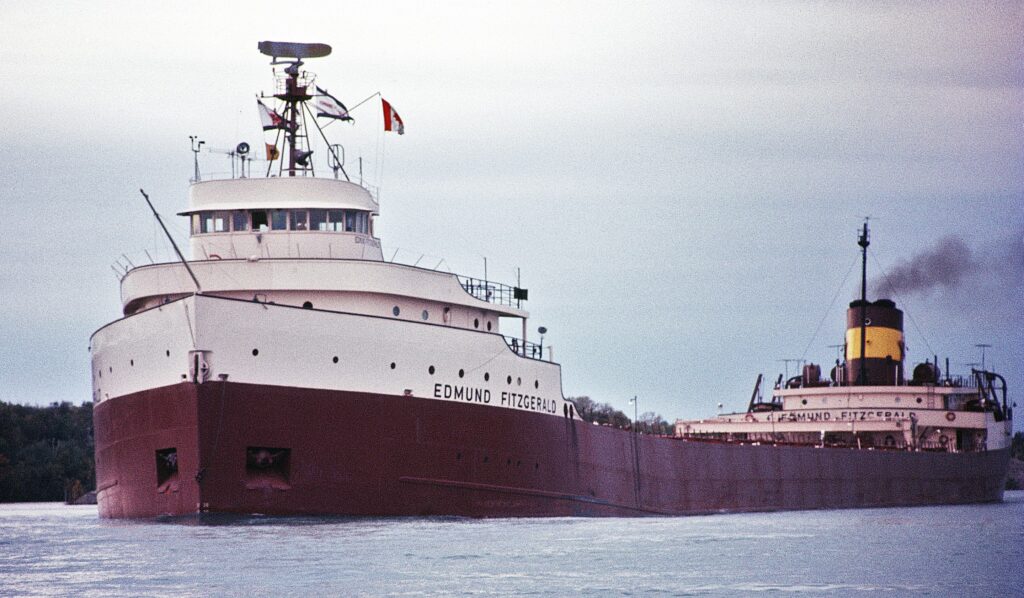
The last haunting correspondence was received on the Anderson at 7:10 p.m. that night. The Anderson couldn’t find Fitzgerlad on their radar, and there was no sign of the bigger ship.
Captain Cooper of the Arthur M. Anderson was a hero that night, even if the Edmund Fitzgerald was lost. Cooper waited only nine minutes after the last transmission to call the United States Coast Guard and report trouble for the other ship.
He was initially brushed off, and Cooper contacted other ships to have them check their radar for the Edmund Fitzgerald instead, to no avail. He continued to call the USCG throughout the night until finally he was taken seriously.
The discovery of the wreck of the Edmund Fitzgerald was accomplished by a U.S. Navy Lockheed P-3 Orion aircraft that was used to detect magnetic anomalies–usually submarines, but in this case, the lake freighter–on November 14, 1975.


USS Johnston. If its not famous it should be.